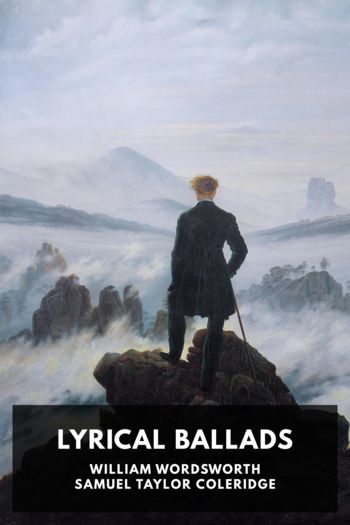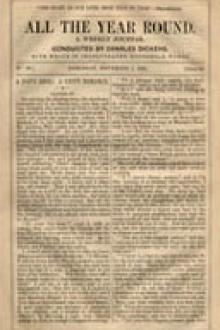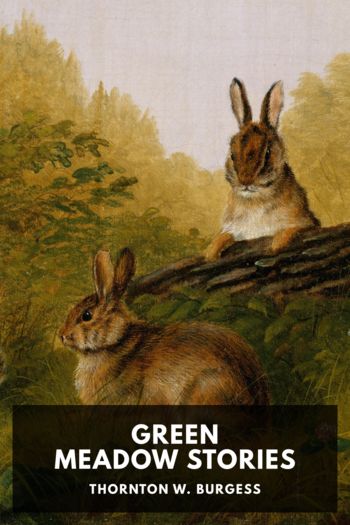Lyrical Ballads by William Wordsworth (best books to read for students .txt) 📕

- Author: William Wordsworth
Book online «Lyrical Ballads by William Wordsworth (best books to read for students .txt) 📕». Author William Wordsworth
The river is not affected by the tides a few miles above Tintern. ↩
This line has a close resemblance to an admirable line of Young, the exact expression of which I cannot recollect. ↩
This poem was intended to be the concluding poem of a series of pastorals, the scene of which was laid among the mountains of Cumberland and Westmoreland. I mention this to apologize for the abruptness with which the poem begins. ↩
This description of the calenture is sketched from an imperfect recollection of an admirable one in prose, by Mr. Gilbert, author of The Hurricane. ↩
The impressive circumstance here described, actually took place some years ago in this country, upon an eminence called Kidstow Pike, one of the highest of the mountains that surround Hawes-water. The summit of the Pike was stricken by lightning; and every trace of one of the fountains disappeared, while the other continued to flow as before. ↩
There is not anything more worthy of remark in the manners of the inhabitants of these mountains, than the tranquillity, I might say indifference, with which they think and talk upon the subject of death. Some of the country churchyards, as here described, do not contain a single tombstone, and most of them have a very small number. ↩
The Great Gavel, so called, I imagine, from its resemblance to the gable end of a house, is one of the highest of the Cumberland mountains. It stands at the head of the several vales of Ennerdale, Wastdale, and Borrowdale. ↩
The Leeza is a river which flows into the Lake of Ennerdale: on issuing from the lake, it changes its name, and is called the End, Eyne, or Enna. It falls into the sea a little below Egremont. ↩
The Kirtle is a tiver in the southern part of Scotland, on the banks of which the events here related took place. ↩
Gill in the dialect of Cumberland and Westmoreland is a short, and, for the most part, a steep narrow valley, with a stream running through it. Force is the word universally employed in these dialects for Waterfall. ↩
Magnolia grandiflora. ↩
The splendid appearance of these scarlet flowers, which are scattered with such profusion over the hills in the southern parts of North America, is frequently mentioned by Bartram in his Travels. ↩
The Tone is a river of Somersetshire at no great distance from the Quantock Hills. These hills, which are alluded to a few stanzas below, are extremely beautiful, and in most places richly covered with coppice woods. ↩
The house at which I was boarded during the time I was at school. ↩
In several parts of the North of England, when a funeral takes place, a bason full of sprigs of boxwood is placed at the door of the house from which the coffin is taken up, and each person who attends the funeral ordinarily takes a sprig of this boxwood, and throws it into the grave of the deceased. ↩
Great How is a single and conspicuous hill, which rises towards the foot of Thirl-mere, on the western side of the beautiful dale of Legberthwaite, along the high road between Keswick and Ambleside. ↩
In Cumberland and Westmoreland are several inscriptions, upon the native rock, which, from the wasting of time, and the rudeness of the workmanship, had been mistaken for Runic. They are without doubt Roman.
The Rotha, mentioned in this poem, is the tiver which, flowing through the Lakes of Grasmere and Rydale, falls into Wyndermere. On Helm-Crag, that impressive single mountain at the head of the Vale of Grasmere, is a tock which from most points of view bears a striking resemblance to an old woman cowering. Close by this rock is one of those fissures or caverns, which in the language of the country are called dungeons. Most of the Mountains here mentioned immediately surround the vale of Grasmere; of the others, some are at a considerable distance, but they belong to the same cluster. ↩
Collins’s “Ode on the Death of Thomson,” the last written, I believe, of the poems which were published during his lifetime. This ode is also alluded to in the next stanza. ↩
Clipping is the word used in the north of England for shearing. ↩
The story alluded to here is well known in the country. The chapel is called Ings Chapel; and is on the right hand side of the road leading from Kendal to Ambleside. ↩
It may be proper to inform some readers, that a sheepfold in these mountains is an unroofed building of stone walls, with different divisions. It is generally placed by the side of a brook, for the convenience of washing the sheep; but it is also useful as a shelter for them, and as a place to drive them into, to enable the shepherds conveniently to single out one or more for any particular purpose. ↩
ColophonLyrical Ballads
was published in 1798 by
William Wordsworth and Samuel Taylor Coleridge.
This ebook edition is based on a revised version published in 1805.
This ebook was produced for
Standard Ebooks
by
Alex Cabal,
and is based on a transcription produced in 2001 by
Bruce Graver and Ronald Tetreault
for
Romantic Circles
and on digital scans available at the
Internet Archive (vols. I and II).
The cover page is adapted from
Der Wanderer über dem





Comments (0)